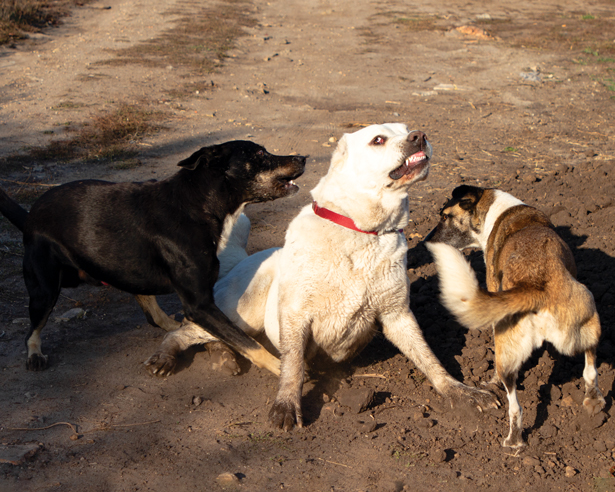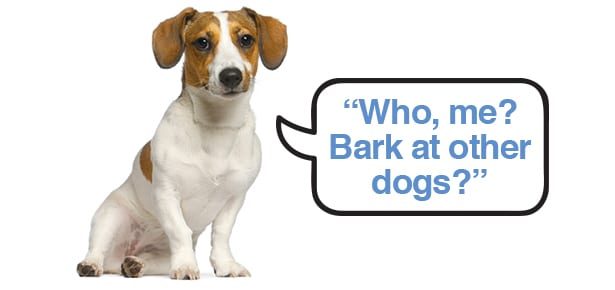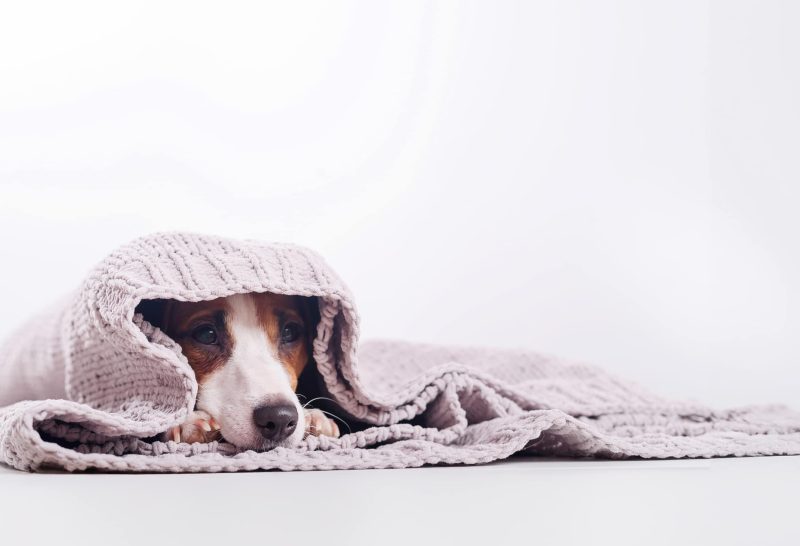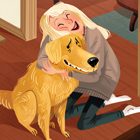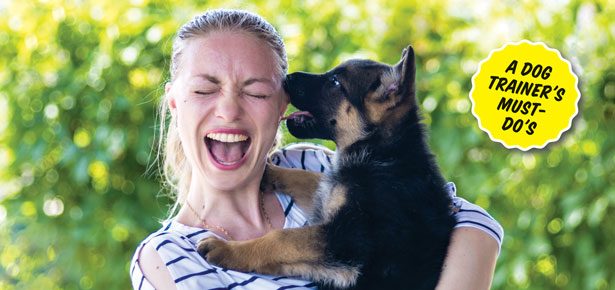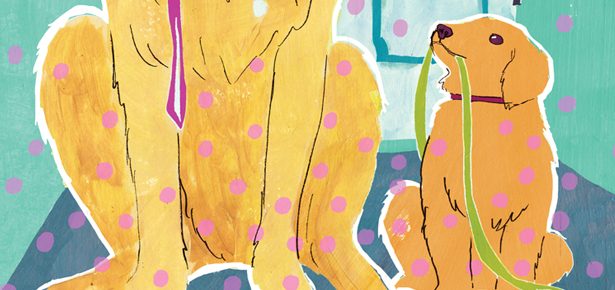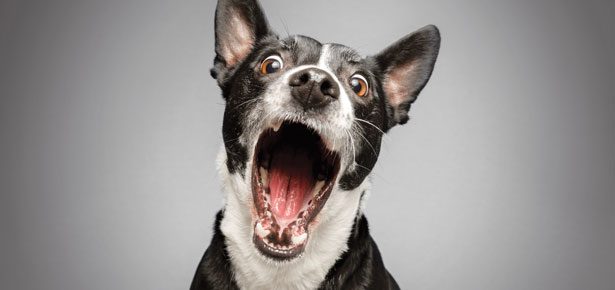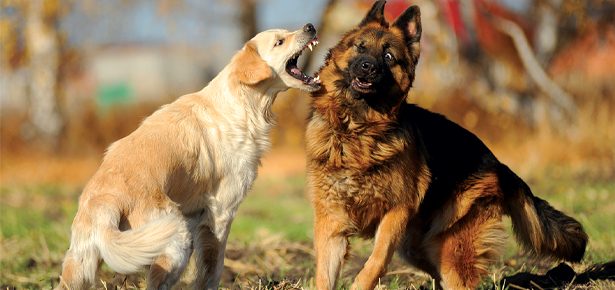
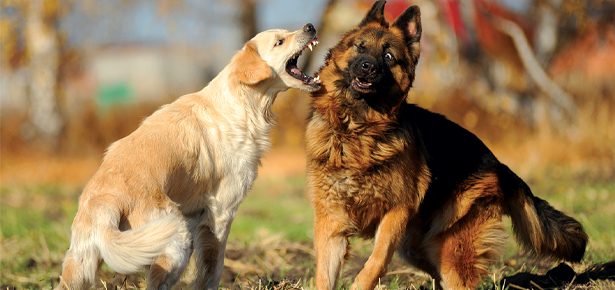
Play Behaviour: The Good, The Bad & The Ugly
How to tell if dogs are playing nicely or if you need to intervene
You’ve been invited to a party where you hardly know anyone except the host. You grab a drink and take a look around while your host wanders off to greet other guests. Suddenly, someone grabs you from behind in a huge bear hug.
“Is that you?!” the guy gushes. “Joe has told me everything about you, and I already love you myself!” You cringe as his sweaty hands grasp your shoulders. You scramble out of his reach, but clueless to your distress, he keeps coming at you. Trying to escape you accidentally bump into an elegant woman who spills her champagne.
“You idiot!” she snaps. “This dress cost $1,000!”
“I’m so sorry,” you mumble, backing away. Out of the corner of your eye you see a wiry looking man on the outskirts of the room, scanning the room and staring at everyone without blinking. That looks kind of creepy, so you decide to make your way to the door and get out of here. You’re just about to make a break for it when a small mob descends on you and blocks your path.
“Who are you?” a woman asks.
“Do I know you?” a guy inquires.
“Hey, have we met? I like your shoes. Who does your hair?” another woman croons, reaching out to stroke your hair.
Trapped, you start to panic. “Leave me alone!” you cry out.
“You don’t have to be a jerk about it,” one of them mutters as they drift off.
Who was having fun at this party? Almost everyone but you.
Now, flip this scenario into a typical unregulated dog park. You’re a dog visiting the park for the first time. The sweaty gushy guy is a goofy Boxer who body slams into every dog, claiming them as a best friend whether they feel the same way or not. Creepy starey guy on the outskirts sounds like a Border Collie, staring at every dog in the park, ready to herd them back into a corner. Princess Champagne the Terrier is easily offended. And blocking your escape is a pack of friendly Doodles who don’t understand personal space.
Some of these dogs get along just fine and will enjoy a friendly get-together. But not every dog will, and that can lead to misunderstandings, squabbles, and even fights. Here’s how to tell if your dog is having a good time, a bad time, or if they’re the overenthusiastic partygoer who isn’t reading the cues of other guests.
PERFECT PLAYDATES
There are several things that make dogs compatible in play. Generally, you want dogs of the same size. While it’s true that big dogs and little dogs can play together nicely, this requires careful supervision and training to ensure the little one doesn’t get hurt. With no ill intention, an enthusiastic teenage Golden Retriever can seriously hurt a baby Maltese.
Dogs should have similar play styles.
If one dog likes to chase but another dog likes to body slam, this may not be a good match.
When dogs are playing well together, it will be give and take. Both dogs will be enjoying the interaction and happy to engage. If one dog is trying to avoid the other, cowering, trying to hide behind you, or getting cranky, this is not a good match. You need to intervene before it escalates. Never let dogs “work it out on their own.”
THE AWKWARD ONES
Some dogs are great with all dogs. Some enjoy playing with a few select buddies. Some dogs don’t enjoy the company of other dogs at all. All of these are normal. It’s a myth that every dog should love every other dog. We don’t love everyone we meet, so why should our dogs?
What’s not good is when a dog feels a need to growl, snap or bite to get their message across that they don’t want to be around another dog. If your dog is fearful or aggressive towards dogs (or people) then please seek professional help from a reward-based trainer who specializes in behaviour modification.
Some dogs are just awkward. They don’t “speak dog” very well, so their intentions may be misread by other canines. For example, the puppy that just launches herself at another dog’s face is not demonstrating an appropriate greeting. While some dogs may understand she means well, other dogs might get offended and snap at her. Is your dog awkward around other dogs? You’ll need to intervene. Don’t allow your dog to run up into another dog’s personal space.
GAMES GOOD AND BAD: HOW TO TELL THE DIFFERENCE
Chasing, wrestling, and tug of war are all common dog games. Jaw sparring, or “bitey face,” is when dogs clash their open mouths together. The dogs may growl when they do this, which sounds quite frightening, but no damage is done.
If a dog constantly slams other dogs to the ground, especially biting around the neck or pouncing on shoulders, this is not good. The dog doing the slamming may be having a ball, but this is not appropriate behaviour.
Stalking other dogs and targeting them from across a yard is not acceptable. Remember, all dogs need to have a good time. If that’s not happening, intervene immediately.
PRIVATE DATES ARE BEST
Rather than risk crazy partygoers in the local park, why not curate an appropriate friend group for your dog and set up private playdates? You can hand-pick the right matches and ensure that everyone has a safe, happy time. Choose a fenced yard (or rent one) for the event. Have plenty of water bowls. If you’re going to have toys or use treats, make sure all your doggie guests are well-behaved and won’t fight over them. You’ll be the favourite party host of all!
Photo kreminska/bigstock
HOW TO BREAK UP A DOG FIGHT
Hopefully you won’t ever need this information, but please review just in case.
1. Do NOT reach for a dog’s collar to try and pull him away. You are likely to get bitten.
2. If there is more than one person, each grab a dog’s hind legs and lift up high. This is the “wheelbarrow technique.” Do not pull until the dog you are holding has let go of the other dog, or you could cause tearing and further damage. Note this will only work if every dog has a person. Pulling just one dog up and away will make him vulnerable to attack.
3. You can try deterrent sprays.
4. If you have a hose nearby, spray them with water.
5. If the fight is indoors, grab the nearest blanket or sheet and throw it over the dogs. Temporarily blinded, they may stop fighting.
6. Once separated, leash and distance the dogs from each other so they don’t re-engage.
This article originally appeared in the award-winning Modern Dog magazine. Subscribe today!
Join the newsletter and never miss out on dog content again!
"*" indicates required fields
By clicking the arrow, you agree to our web Terms of Use and Privacy & Cookie Policy. Easy unsubscribe links are provided in every email.
